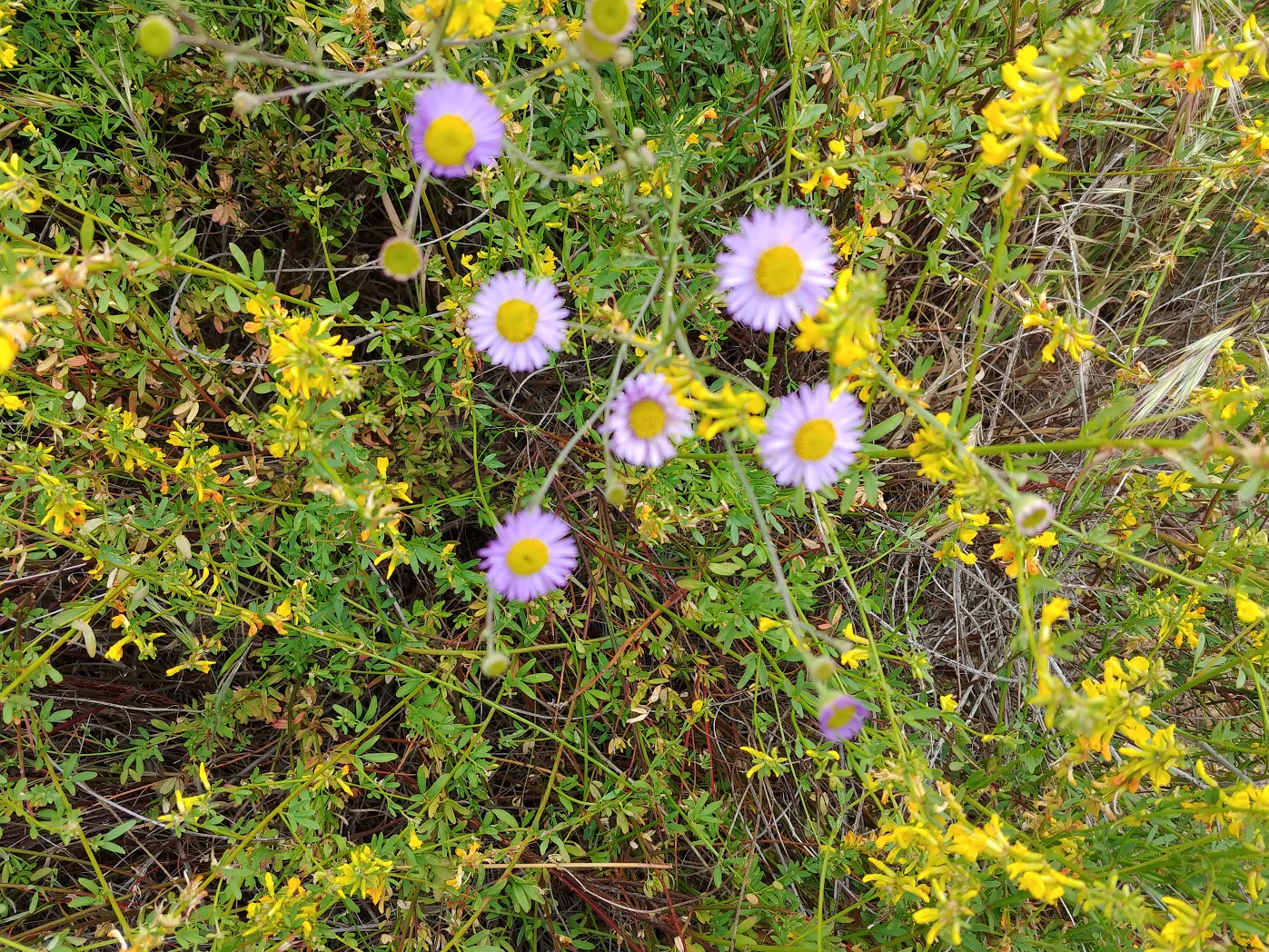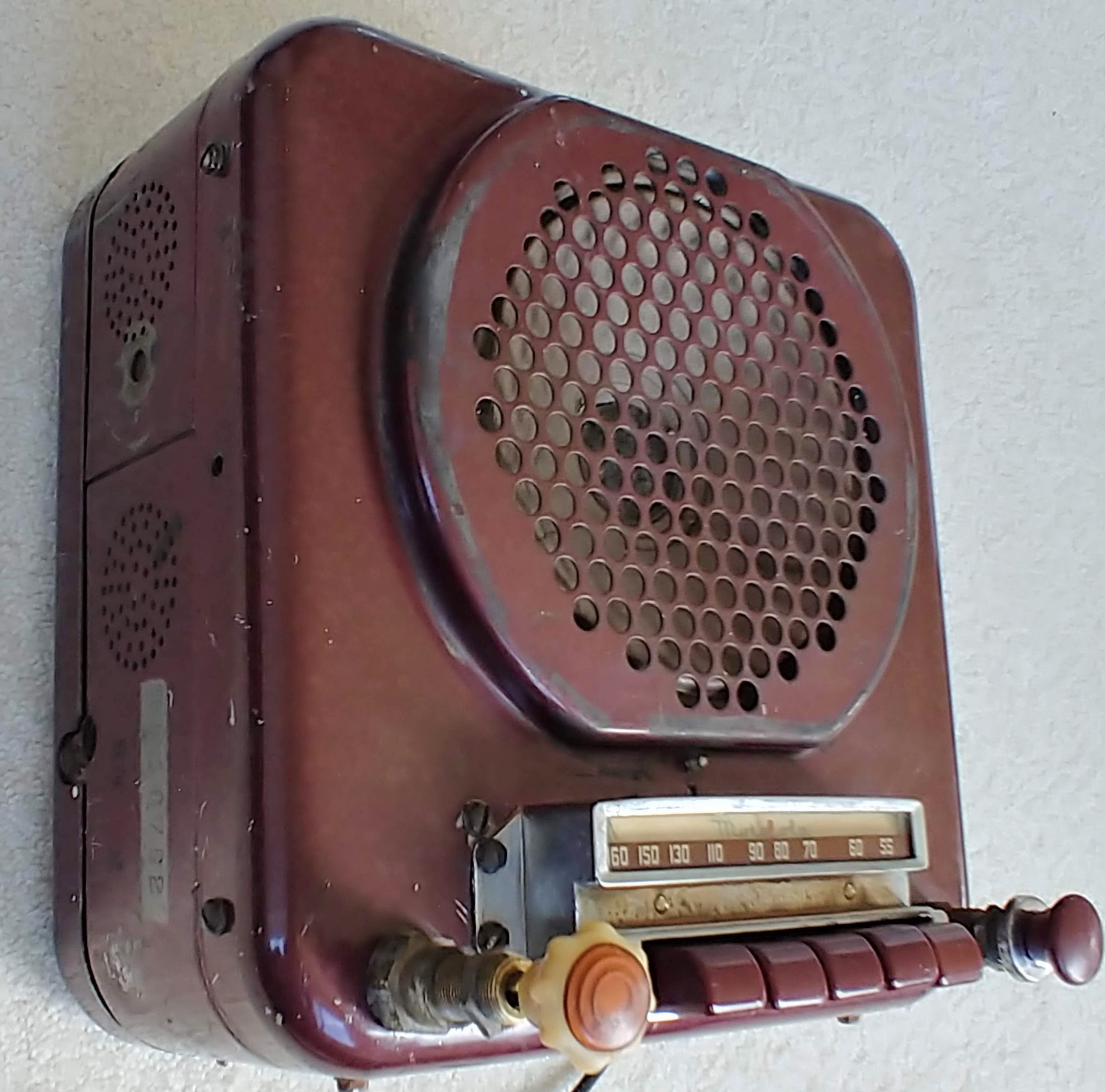
Sticky Monkey
Bush Monkey Flower (Diplacus aurantiacus)
The bush monkey-flower or sticky monkey-flower is a flowering perennial plant that grows in a subshrub form, native to southwestern North America from southwestern Oregon south through most of California and into Baja, Mexico. It grows up to 1.2 meters tall, has deep green sticky leaves 3 to 7 centimeters long and up to a centimeter broad and flowering stems that grow vertically. The flowers are tubular at the base and about 2 centimeters long with five broad lobes; they occur in a variety of shades from white to red, the most common color being a light orange. They are pollinated by bees and hummingbirds. The stigmas are notably sensitive and will close after being touched.
This genus has been subject to taxonomic debate. It is currently included in the Lopseed family but was previously in the Scrophularia. Some authorities prefer to list the genus as Diplacus. Within this species there are six recognized varieties that differ in flower size, color and other features.
https://calscape.org/Diplacus-aurantiacus-()
Linanthus
Fringed Linanthus (Linanthus dianthiflorus)
Linanthus dianthiflorus is a species of flowering plant in the phlox family known by the common names fringed linanthus and ground pink. It is endemic to southern California, where it can be found in many types of local open habitat, such as chaparral and coastal sage scrub. This is an annual herb producing a very thin, hairy stem no more than about 12 centimeters long. The leaves are linear to threadlike and unlobed, reaching up to 2 centimeters long. The flower cluster bears several leaves and one or more flowers with hairy leaflike sepals. Each flower has pale pink lobes with fringed or toothed tips and purple spots at the bases. The throat of the flower has yellow and white coloration.
https://calscape.org/Linanthus-dianthiflorus-(Fringed-Linanthus)
Sugar Bush
Bud
Flower
Sugar Bush (Rhus ovata)
Rhus ovata, also known as Sugar Bush or Sugar Sumac, is an evergreen shrub to small tree that grows in chaparral in dry canyons and slopes below 1300 meter in Southern California, Arizona and Baja California. In the southern part of it's range (in Los Angeles, Orange and San Diego Counties) Rhus ovata generally grows in the foothills and mountains, and the closely related Rhus integrifolia (Lemonade Berry) grows closer to the coast. Its size ranges from 2 - 10 meter tall and it has a rounded appearance, often growing wider than tall. The twigs of Rhus ovata are thick and reddish in color. Its foliage consists of dark green, leathery, ovate leaves that are folded along the midrib. The leaf arrangement is alternate. Its flower clusters which occur at the ends of branches consist of small, 5-petaled, flowers that appear to be pink, but upon closer examination actually have white to pink petals with red sepals. Additionally, the flowers may be either bisexual or pistillate. The fruit is a small reddish, sticky drupe, about 6 - 8 millimeter in diameter that is said to be edible.
Sugar Bush is tough and easy to grow, and very fast growing once established. A 5 gallon container plant will reach 10 feet in about 3 years if happy. In nature, you'll almost always see Sugar Bush on slopes, though it grows well on flat areas in garden applications. It's one of the few larger chaparral shrubs that grows well in south facing slopes even in the drier parts of it's range, and is a great bank stabilizer. It tolerates a wide variety of soils. It grows fastest with full sun, and just a little slower in part shade. It tolerates summer water up to 1x per month, but shouldn't need any once established. The plants are incredibly healthy, and typically will appear green and lush through the entire dry season without any supplementary water. The biggest downside of this plant is that it can get huge, often more than 30 feet wide, and can aggressively crowd out nearby plants. It is said to be fire resistant, especially if given supplemental water.
Sugar Bush hybridizes often with Lemonade Berry (Rhus integrifolia). A good rule of thumb for landscaping applications is within 5-10 miles of the coast, Lemonade Berry is a better choice. More inland, Sugar Bush does better.
Wild White Indigo (Baptisia Alba)
California Buttercup
California Buttercup (Ranunculus californicus)
The California buttercup (Ranunculus californicus), a perennial herb of the Ranunculaceae family, brightens much of California (except the deserts) with 3/4 inch, remarkably glossy, deep yellow flowers, each with 9 to 17 petals. Their native habitat extends into Baja California, Oregon, and some Pacific coast islands. There are two recognized Varieties: Var californicus is widespread and the flowers rise above the basal leaves on 1 ft to 2ft branching stems. Var cuneatus is found primarily on the north-central coast and blooms from short stems, giving this variety the look of a low ground cover. By mid-summer the flowers have shed seed, and the plant is dormant. New seedlings readily volunteer in late winter to spring. Propagate easily by seed from seed companies and local exchanges. Nursery plants may occasionally be available.
For the garden, plant this buttercup in front of the border and in meadows with native annuals and bulbs, blue-eyed grass, shooting stars, woolly blue-curls, and other natives that require little, if any, supplemental summer irrigation. Buttercups are not only worthy cut flowers but also a good source of nutrition. Toast them in a frying pan briefly. Use in porridge or grind and add to baked goods. Don't miss this easy to grow and quite appealing native. Often riparian or semi-riparian in the drier parts of its range
https://calscape.org/loc-California/California%20Buttercup%20(Ranunculus%20californicus)?newsearch=1
Southern Miners Lettuce
Southern Miner's Lettuce (Claytonia perfoliata ssp. mexicana)
Southern Miner's Lettuce (Claytonia perfoliata ssp. mexicana) is a common native annual herb that grows in northern, southern and central California. It tends to grow in vernally moist places, at elevations from 0-6600 feet.
Purple Owl’s Clover
Purple Owl's Clover (Castilleja exserta)Owl's Clover is a species in the Orobanchaceae (Broomrape) family. The genus Castilleja, which includes the Indian paintbrushes, includes numerous species. It was formerly included in the genus Orthocarpus, and some sources may still refer to it by that name. This species is native to the southwestern United States but may be found in places where it has been introduced, such as Hawaii. In California there are three recognized subspecies with fairly distinct geographical ranges. The plant is an annual about a foot tall with a hairy stem covered in thready leaves. Although this species is variable in appearance and easily hybridizes with other Castilleja, it generally bears a brightly-colored flower cluster of shaggy pink-purple or lavender flowers that resemble clover (but they are not related). The thin, erect leaves are usually tipped with the same color, giving the flower cluster the appearance of a paintbrush. It produces pods containing seeds.
Like other related plants in the family, this is a hemiparasite which derives some of its nutrients directly from the roots of other plants by injecting them with haustoria; this is the reason for its small, reduced leaves. Therefore, it is almost always planted with a perennial species to serve as the host plant.
https://calscape.org/Castilleja-exserta-(Purple-Owl's-Clover)
Caterpillar Phacelia
Phacelia cicutaria (Caterpillar Phacelia or Caterpillar Scorpionweed) is an annual species in the Boraginaceae (Borage) family that is native to California, southern Nevada, and Baja California. It grows mainly in chaparral, frequently in burnt areas or on rocky slopes. Phacelia cicutaria is an upright annual shrub growing up to than 0.6 meter (2') high. Its foliage is deeply lobed, 2-15 centimeter. (1-6") long, with spiked segments. The flower buds are held in tight, hairy coils which uncoil as the flowers open one by one. The flowering stems' resemblance of caterpillars lends this plant its common name. Flowers appear Mar-May and are dirty-white to pale lavender in color.
https://calscape.org/Phacelia-cicutaria-()
https://en.wikipedia.org/wiki/Phacelia_cicutaria
Chaparral Dodder
Cuscuta californica is a species of dodder known by the common names Chaparral dodder and California dodder. It is native to western North America. Cuscuta californica is a parasitic vine which climbs other plants and takes nutrition directly from them via a haustorium. The dodder resembles a pile of yellow-orange straw wrapped tightly around its host plant. It is mostly stem; the leaves are reduced to scales on the stem's surface, since they are not needed for photosynthesis while the dodder is obtaining nutrients from its host. It bears tiny white flowers which are only about 3 millimeters wide, and fruits which are even smaller. Cuscuta californica is a parasitic vine which climbs other plants and takes nutrition directly from them via a haustorium. The dodder resembles a pile of yellow-orange straw wrapped tightly around its host plant. It is mostly stem; the leaves are reduced to scales on the stem's surface, since they are not needed for photosynthesis while the dodder is obtaining nutrients from its host. It bears tiny white flowers which are only about 3 millimeters wide, and fruits which are even smaller. Habitat. This is a member of grassland and chaparral plant communities, and can be found in weedy, partially developed areas. Like most other dodders, this species is considered a noxious weed in many areas.
https://calscape.org/Cuscuta-californica-(Chaparral-Dodder)?srchcr=sc5a16178b6d921
White Sage
White sage, bee sage, or sacred sage, is a cornerstone species of the coastal sage scrub habitat of Southern California and Baja California. White sage is fragrant, with silver-white leaves, and clusters of white flowers with lavender streaks. Young leaves start off green and turn white as they get older. White sage is deeply rooted in the cultures and lifeways of indigenous communities of Southern California and northern Baja, the only region this sage naturally occurs in the world. It is also an important food source for bees, butterflies, birds, and other wildlife. Larger bees, notably carpenter bees, are the predominant pollinators of white sage. Wild white sage populations are currently under intense threat by development, smudge stick poaching, climate change, drought, and wildfire.
https://calscape.org/Salvia-apiana-(White-Sage)?srchcr=sc5dc62433e57e5
Goldenstar
Bloomeria crocea, also known as Goldenstar, is a geophyte of the Themidaceae from California and northern Baja California. It is found along hillsides, in grassland and chaparral edges, and in dry flats. Growing in full sun, itt prefers porous soil and semi-dry conditions. Its distribution ranges along the south coast from Santa Barbara County and western Kern County down to Baja California. It is also found on the California Channel Islands. The corm has a fibrous exterior and usually produces only one leaf. Plants produce six-petaled golden flowers that are clustered in a loose umbel. When the three-lobed stigma is fertilized, Bloomeria produces capsules that contain small black seeds. The seeds then require three to four years to become a mature plant.
https://calscape.org/loc-california/Bloomeria%20crocea()
Cardinal Catchfly
Silene laciniata is a herbaceous flowering plant in the same family as carnations (Caryophyllaceae) that is commonly called Indian-pink, Mexican campion, or Mexican-pink. Many subspecies have been described in the past, and some of these names may still be in use. Presently, there are two recognized subspecies in California. Ssp. laciniata is found in the southern coastal part of the state from San Luis Obispo County to San Diego County and throughout much of the Baja peninsula. Ssp. californica is more often found in the central and northern parts of the state in hilly or mountainous areas including the Transverse Range, the Coast Ranges and the foothills of the Sierras. For gardening purposes, check with your nursery for the proper plants for your area.
Silenes develop a deep taproot that helps them get through a dry summer. They may go summer dormant or may stay green depending on conditions of shade, heat and moisture. The plant is valued for its bright red starburst flowers which are small but eye-catching. Silene often grows vine-like through adjacent plants to display its flowers in unexpected locations. Plant it where the small flowers will be most visible. It deserves to be used more often. The common name Catch-fly refers to the sticky hairy glands on the stems and leaves which sometimes trap tiny insects. It is not clear whether this contributes any nutrients to the plant.
Locate this plant behind something else, and let it grow forward to surprise the viewer with its luminous red flowers.
https://calscape.org/loc-California/Cardinal%20Catchfly%20(Silene%20laciniata)?newsearch=1
Coastal Prickly Pear
A species of prickly pear cactus known by the common name coastal prickly pear. Commonly confused with Opuntia semispinosa, which has longer, sometimes spineless pads. It is native to southern California and Baja California, where it grows in coastal sage scrub and chaparral habitat. It generally occurs in dense clumps spreading several meters wide and up to a meter tall. It seldom hybridizes with Opuntia oricola. The branches are made up of orbicular flat segments up to 22 centimeters long. It is covered in clusters of yellowish spines 2 to 4 centimeters long. The flowers are yellow. The fruit is purplish red, up to 5 centimeters long, and less spiny than Opuntia oricola fruit. An important wildlife plant.
https://calscape.org/loc-California/Prickly%20Pear%20(Opuntia%20littoralis)?newsearch=1
Hesperoyucca
Hesperoyucca whipplei (syn. Yucca whipplei ) (chaparral yucca, Our Lord's candle, Spanish bayonet, Quixote yucca, common yucca, foothill yucca) is a species of flowering plant closely related to, and formerly usually included in, the genus Yucca. It is native to southern California, United States and Baja California, Mexico, where it occurs mainly in chaparral, coastal sage scrub, and oak woodland plant communities at altitudes of 300-2500 meter. It produces a stemless cluster of long, rigid leaves which end in a sharp point. The leaf edges are finely saw-toothed. It often grows in sandy washes in the desert or inland valleys.
The plant typically takes 5-10 years to reach maturity, at which point it amazingly shoots up a flower spike to about 10-15 feet in about 2 weeks of growth. The spikes bear a spectacular display of hundreds of bell shaped white to purplish flowers. The fruit is a dry winged capsule, which splits open at maturity to release the seeds.
It is pollinated by the California yucca moth (Tegeticula maculata), a relationship which has become a classic example of symbiosis. Working at night, the female yucca moth collects up to a dozen sacks of pollen grains called pollinia and forms them into a massive ball. She then flies to another plant and lands on the ovary of a flower. Standing with her head near the stigma, she inserts her ovipositor into the ovary wall and lays a single egg. She then rubs her pollen mass against the central stigmatic depression, ensuring pollination. The pollinated ovary will now produce many seeds, ensuring an ample food supply for the larva. Although many associations of Yucca and yucca moth exist, Tegeticula muculata and Hesperoyucca whipplei form an exclusive relationship. After the flowers have been pollinated, Hesperoyucca whipplei dies, though the stalk will typically stay upright for several more years.
Hesperoyucca whipplei is used in xeriscaping in Southern California, but reportedly is difficult to grow outside of its native range. It is extremely drought tolerant and thrives in clay soils. It was used extensively by Native Americans.Fiber from the leaves was used for sandals, cloth, and rope. Young flowers are edible but may be bitter. The Kumeyaay of San Diego County boil them in water and then pour off the water three times before eating them. The stalk of the plant can be eaten. Fruits can be eaten raw, roasted, or pounded into meal. Seeds were roasted and eaten whole or ground into flour.
https://calscape.org/Hesperoyucca-whipplei-(Chaparral-Yucca)?srchcr=sc6279795ce1ffd
California Milkweed
Asclepias californica is a species in the Apocynaceae (Dogbane) family known by the common name California milkweed. It is native to California and northern Baja California from the East Bay region southward and the foothills of the Sierras. It is a flowering perennial with thick, white, woolly stems which bend or run along the ground. The plentiful, hanging flowers are rounded structures with reflexed corollas and starlike arrays of bulbous anthers. The flowers are dull to bright shades of lavender or pink and form an attractive contrast with the grey/white foliage. This plant was eaten as candy by the Kawaiisu tribes of indigenous California; the milky sap within the leaves is said to be flavorful and chewy when cooked.
Acourtia
Acourtia microcephala is a species of flowering plant in the daisy family known by the common name sacapellote. It is native to southern California and Baja California, where it grows in woodland and chaparral, especially in the coastal mountain ranges. Acourtia microcephala is a bushy perennial herb producing several erect stems from a woody caudex up to about 1. 5 meters in maximum height. The stems branch toward the ends and are densely foliated in toothed, wavy-edged, glandular leaves 2 to 15 centimeters long. The stems and leaves are sticky with exudate. The inflorescences contain clusters of many flower heads, each cylindrical head wrapped in long, flat glandular phyllaries. The flower heads are discoid, containing only disc florets and no ray florets. Each disc floret has two lips, the outer of which is long, flat, and usually bright pink, and easily mistaken for a ligule. The fruit is a glandular achene a few millimeters long which has a pappus of bristles up to a centimeter in length.
https://calscape.org/Acourtia-microcephala-()
Sacred Datura
Datura wrightii or Sacred Datura is the name of a poisonous perennial plant and ornamental flower of southwestern North America. It is sometimes used as a hallucinogen. Datura wrightii is classified as a deliriant and an anticholinergic. It is a vigorous herbaceous perennial that grows 30 centimeter to 1.5 meter tall and wide. The leaves are broad and rounded at the base, tapering to a point, often with wavy margins. The flowers are the most striking feature, being sweetly fragrant white trumpets up to 20 centimeter (8 inches) long, often tinted purple, especially at the margin or in the throat. There are five narrow points spaced symmetrically around the rim. It can bloom from April to October. The fruit is spiny and conspicuous. In clear weather, flowers open at nearly full dark and wither a few hours after sunrise the following morning; in cloudy weather or in part shade, they may open earlier and last longer. A closely related species, Datura discolor, is limited to the Colorado desert and is very similar in appearance
https://calscape.org/loc-California/Sacred%20Datura%20(Datura%20wrightii)?newsearch=1
Snow Plant
Sarcodes is a monotypic genus of a single springtime flowering plant in the heath family (Ericaceae) containing the single species Sarcodes sanguinea, commonly called the snow plant or snow flower. It is a parasitic plant that derives sustenance and nutrients from mycorrhizal fungi that attach to roots of trees. Lacking chlorophyll, it is unable to photosynthesize. Ectomycorrhizal (EM) symbioses involve a mutualism between a plant root and a fungus; the plant provides fixed carbon to the fungus and in return, the fungus provides mineral nutrients, water and protection from pathogens to the plant. The snow plant takes advantage of this mutualism by tapping into the network and stealing sugars from the photosynthetic partner by way of the fungus. This form of parasitism is known as mycoheterotrophy. The plant's aboveground tissue is its inflorescence, a raceme of bright scarlet red flowers wrapped in many straplike, pointed bracts with fringed edges, themselves bright red to orange in color.
https://calscape.org/loc-California/Snow%20Plant%20(Sarcodes%20sanguinea)?newsearch=1
California Buckwheat
Known by the common name California buckwheat. This common shrub is native to the southwestern United States and northwestern Mexico, where it grows on scrubby slopes and in chaparral and dry washes in a number of habitats. It is variable in appearance, forming a patchy, compact bramble or a spreading bush approaching two meters in height and three across. The leaves grow in clusters at nodes along the branches and are leathery, woolly on the undersides, and rolled under along the edges. Flowers appear in dense, frilly clusters which may be anywhere from a few millimeters to 15 centimeters wide. Each individual flower is pink and white and only a few millimeters across. This plant is particularly attractive to honey bees and is a good source of nectar over many months in drier areas.
There are four recognized varieties of California Buckwheat: 1. Eriogonum fasciculatum var. foliolosum or Leafy California Buckwheat, a brighter green variety which grows primarily on the coast and western side of the coastal mountain ranges, and is often carried in nurseries, 2. Eriogonum fasciculatum var. polifolium, a gray variety which grows primarily in the desert regions and through the coastal foothills, and is sometimes available in nurseries, 3. Eriogonum fasciculatum var. fasciculatum, or Coastal California Buckwheat, which grows most closely to the coast, and 4. Eriogonum fasciculatum var. flavoviride, or Sonoran Desert California Buckwheat, which grows primarily in the Sonoran Desert and desert mountains.
California Buckwheats are tough and easy to grow, even in very dry conditions. Plant in a well draining sunny site. It shouldn't need supplemental water after established, but it will tolerate occasional summer water better than most extremely drought tolerant California natives. Form is variable, ranging from often open and upright in the foothills, to often dense and mounding closer to the coast. It produces profuse pink to white and cream-colored flowers as early as March that dry to a pretty red rust color as the soil dries. It sheds its dried flowers and a significant portion of its small blade-like leaves each dry season, and is an important plant for creating natural mulch. California Buckwheat is a keystone species for sagebrush scrub ecosystems, and a great choice for wildlife and butterfly gardens. Low growing forms of both Leafy Green Buckwheat and Interior California Buckwheat can be found in nurseries to use as spreading ground covers. Eriogonum fasciculatum 'Theodore Payne' can grow low as just 1 foot with a spread of up to 8 feet.
https://calscape.org/loc-California/California%20Buckwheat%20(Eriogonum%20fasciculatum)?newsearch=1
Toyon (California Holly Berry)
Toyon is a beautiful perennial shrub native throughout the western part of California and the Sierra foothills. It is a prominent component of the coastal sage scrub plant community, and is a part of drought-adapted chaparral and mixed oak woodland habitats. It is also known by the common names Christmas berry and California Holly from the bright red berries it produces. The city of Hollywood was name for this plant.
It often grows to about 8 feet tall, but there are some spectacular specimens in the Los Padres National Forest that are over 30 feet tall. Its leaves are evergreen, alternate, sharply toothed, and are 5 cm in length and 2 cm wide. In the early summer it produces small white flowers 6mm diameter in dense bunches, The five petals are rounded. The fruit is small, bright red and berry-like, produced in large quantities, maturing in the fall and persisting well into the winter. The flowers are visited by butterflies and other insects, and have a mild, hawthorn-like scent. The berries are consumed by birds, including mockingbirds, American robins, and cedar waxwings. Mammals including coyotes and bears also eat and disperse the berries.
Toyon berries are acidic and astringent, and contain a small amount of cyanogenic glycosides, which break down into hydrocyanic acid on digestion. This is removed by mild cooking. Raw berries are mealy, astringent and acid, though were eaten fresh, or mashed into water to make a beverage by Native Americans.
Toyon are beautiful plants and easy to grow. If properly situated, they can grow very quickly, up to 10 feet in three years. They like sun or part shade, though they tend to do better in part shade in the southern, drier part of their geographic range. They can handle a wide variety of soils, including clay, sand and serpentine, but need more moisture than most chaparral shrubs. They do well near seasonal creeks, seeps, bottom of slopes, or near irrigated areas. These plants tolerate a fair amount of summer water, up to 1x per week if the drainage is good. Toyon can be planted near houses since they are fire retardant when given enough moisture. They are an excellent hedge plant.
https://calscape.org/Heteromeles-arbutifolia-(Toyon)
California Sunflower
Helianthus californicus is a species of sunflower known by the common name California sunflower. It is native to California and Baja California, where it grows in many types of habitat. This wild sunflower is an erect perennial growing from a network of tough, woody roots with small rhizomes. It is a sprawling, gangly plant, sending a thin stem to heights between one and three meters or more. The lance-shaped leaves may be 20 centimeters long and are smooth or slightly toothed along the edges. The flower cluster holds several flower heads. Each head is supported by a base covered in long, pointed phyllaries that bend back as the head ages and develops fruit. The flower head has a fringe of golden yellow ray florets, each two or three centimeters long, and a center filled with curly yellow and brown disc florets. The achene is about half a centimeter long.
https://calscape.org/loc-California/California%20Sunflower%20(Helianthus%20californicus)?newsearch=1
Smoothstem Blazing Star
Mount Baldy hike 7/5/2022
Mentzelia laevicaulis is a showy wildflower native to western North America. In California it is found in most counties throughout the state. Its common names include Giant Blazing Star and Smoothstem Blazing Star. It grows a weedy-looking, branched stem which may reach a meter in height. The whitish-green stem and its lateral branches bear the occasional triangular sawtoothed leaf. At the tip of each branch blooms a spectacular yellow flower. The star-shaped flower has five narrow, pointed petals with shiny yellow surfaces, each up to 8 centimeters long. Between the petals are long, thin yellow sepals. The center of the open-faced flower is filled with a great many whiskery yellow stamens. Beneath the petals are long, curling leaves. The plant bears capsule fruits containing winged seeds. This is a widespread plant which can be found in sandy, rocky, and disturbed areas, such as roadsides.
https://calscape.org/loc-California/Smoothstem%20Blazingstar%20(Mentzelia%20laevicaulis)?newsearch=1
Palmer's Penstemon
Mount Baldy hike 7/5/2022
Palmer's Penstemon (Penstemon palmeri) is a member of the Plantaginaceae (Plantain) family, notable for its showy, rounded flowers. This plant grows erect and may reach two meters in maximum height but more often less. The leaves are generally oppositely arranged and have toothed margins. The flower cluster is a panicle or raceme with small leaves. The flower has a five-lobed calyx of sepals and a cylindrical corolla which may have an expanded throat. The flower is pink to blue-purple, and occasional specimens are red, yellow, or white. The staminode is partially hairy. There is one recognized variety, P. palmeri var. palmeri. Both are found in the arid mountains of Inyo and San Bernardino counties.
https://calscape.org/loc-California/Penstemon%20palmeri%20(Palmer's%20Penstemon)?newsearch=1









